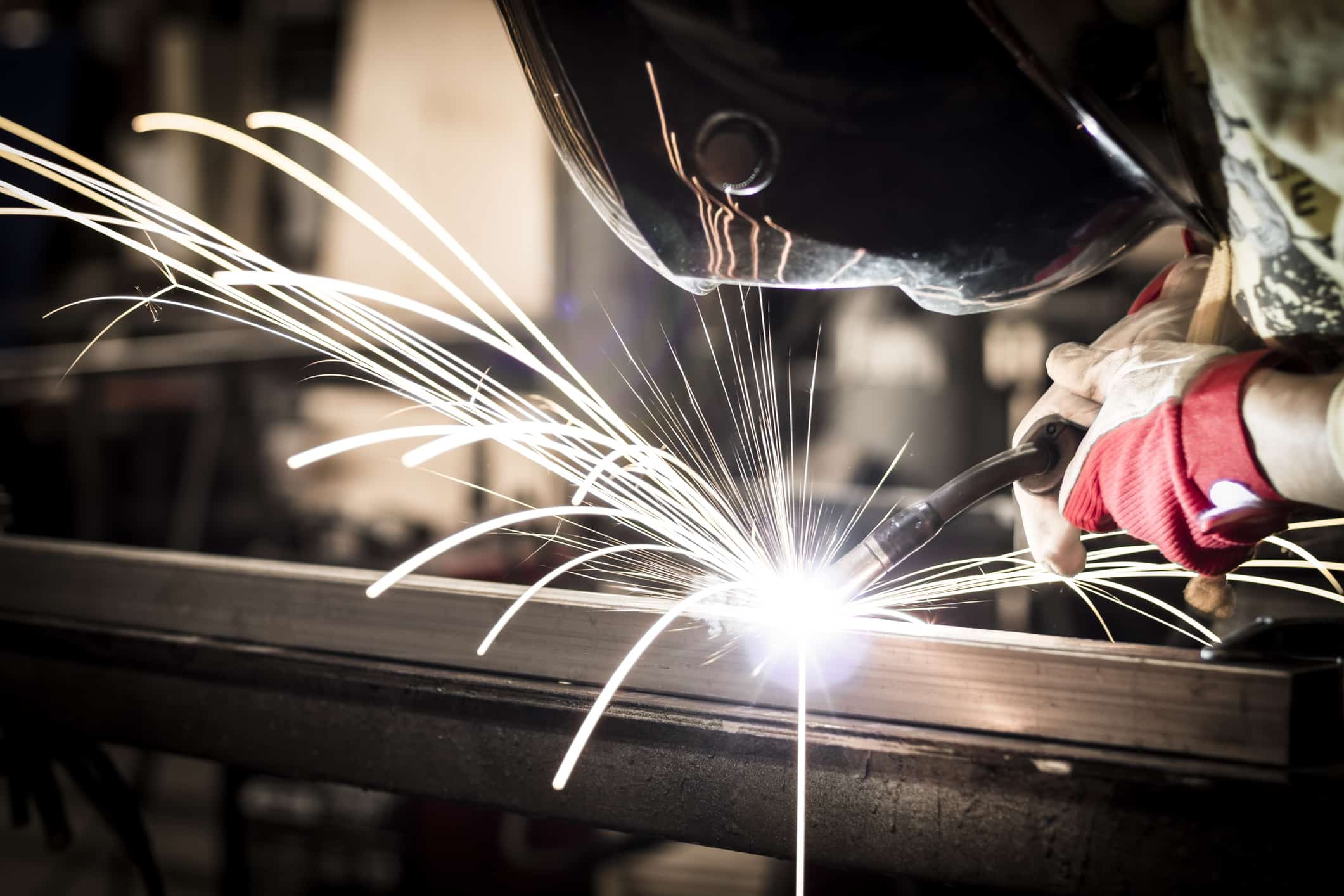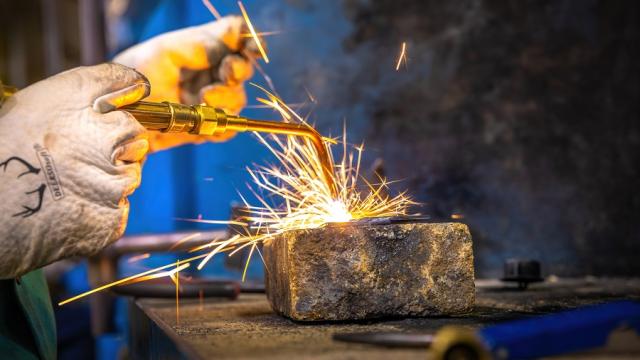All Regarding Welding: Secret Insights Into Techniques and Best Practices for Success
Welding incorporates a range of methods, each fit for details materials and applications. Comprehending these techniques, such as GMAW, SMAW, and TIG, is essential for achieving excellent outcomes. The ideal devices and safety techniques can not be forgotten. As prep work and troubleshooting play vital roles in the welding process, mastering these components can considerably improve the quality of the end product. What are the key variables that guarantee an effective weld?
Comprehending Different Welding Strategies
Welding techniques encompass a selection of methods, each suited to particular applications and products. Among one of the most typical techniques are Gas Steel Arc Welding (GMAW), Shielded Steel Arc Welding (SMAW), and Tungsten Inert Gas Welding (TIG) GMAW, also referred to as MIG welding, is preferred for its rate and adaptability, making it perfect for slim materials. SMAW, or stick welding, is favored for its simplicity and effectiveness in exterior environments, especially with thicker steels. TIG welding supplies precision and control, making it suitable for detailed work and non-ferrous steels (Montana Mobile Welding and Repair Welding). Each strategy has its distinct benefits and factors to consider, allowing welders to choose the finest technique based upon the task's requirements, material kind, and desired results. Understanding these methods is important for successful welding
Crucial Welding Equipment and Tools
While numerous welding methods require certain abilities, the appropriate devices and devices are just as important for achieving quality results. Vital welding tools includes welding devices, which differ depending upon the method-- such as MIG, TIG, or stick welding. Safety gear, including aprons, helmets, and gloves, warranties safety and comfort throughout the procedure. On top of that, components and clamps help secure products in place, guaranteeing accuracy in welds. Consumables like welding rods, cord, and securing gas are likewise important parts that influence the top quality of the weld. Additionally, devices such as cutters and mills promote surface area prep work and post-weld completing, contributing to a specialist end result. Investing in top quality equipment ultimately boosts the efficiency and performance of welding jobs.
Safety And Security Practices in Welding
Appropriate safety and security methods are necessary in the welding market to secure workers from potential threats. Welders need to put on suitable individual protective equipment (PPE), consisting of safety helmets with appropriate shading, handwear covers, and flame-resistant garments. Adequate ventilation is vital to decrease exposure to harmful fumes and gases created throughout the welding procedure. Furthermore, workers must be educated in the correct handling of welding tools to stop crashes. Fire precaution, such as maintaining combustible materials far from the welding location and having fire extinguishers easily offered, are needed. Regular examinations of equipment and workspaces can assist recognize possible risks prior to they lead to mishaps. By adhering to these safety and security techniques, welders can produce a more secure working environment and minimize dangers linked with their profession.
Preparing Materials for Welding
Preparing products for welding is a crucial action that significantly affects the high quality and honesty of the end product (Welding). Appropriate preparation includes cleansing the surfaces to remove contaminants such as oil, dirt, and rust, which can jeopardize the weld. Techniques such as grinding, sanding, or making use of solvents are commonly utilized to attain a tidy surface. Furthermore, making certain that the products fit together comfortably is vital; voids can lead to weak welds. It's also vital to take into consideration the alignment and positioning of the elements, as this will certainly affect the ease of welding and the last result. Finally, choosing the suitable filler product and making sure compatibility with the base metals is essential for achieving solid, long lasting welds
Tips for Getting High-Quality Welds
Achieving premium welds calls for interest to information and adherence to best techniques throughout the welding procedure. Appropriate joint prep work is important, ensuring surfaces are tidy and totally free from contaminants. Choosing the appropriate filler material and welding method based on the base metals is vital for ideal bonding. Preserving constant travel speed and angle while welding can prevent flaws and promote uniformity. In addition, controlling warm input is important; extreme warm can bring about bending and compromised joints. Regularly inspecting the welds during the process permits for instant modifications if essential. Finally, employing suitable post-weld treatments, such as cleansing and stress alleviation, can boost the best site toughness and integrity of the weld, inevitably ensuring a successful outcome.
Fixing Common Welding Issues
Welding usually provides challenges that can influence the high quality and stability of the end product. Typical concerns such as porosity, irregular weld grains, and overheating can emerge, each needing certain fixing techniques. Recognizing these problems is important for welders to enhance their skills and attain suitable outcomes.
Porosity Issues Discussed
Although porosity can often be neglected, it stays a crucial problem in welding that can endanger the integrity of a completed product. Porosity refers to the visibility of tiny gas pockets within the weld grain, which can lead and weaken the joint to early failing. This issue generally emerges from contaminants, wetness, or inappropriate shielding gas insurance coverage during the welding procedure. To mitigate porosity, welders ought to confirm that the base products are clean and dry, make use of suitable shielding gases, and keep regular welding parameters. Regularly inspecting the devices and atmosphere can likewise aid identify potential problems prior to they show up in the weld. Attending to porosity properly is crucial for accomplishing solid, durable welds that fulfill top quality requirements.

Irregular Weld Beads
Irregular weld beads can significantly influence the high quality and stamina of an ended up product. Different factors add to this concern, including incorrect traveling speed, inaccurate amperage setups, and inconsistent electrode angles. When the welder moves too promptly, a bead may show up slim and lack penetration, while relocating as well slowly can cause extreme buildup. Additionally, using the incorrect amperage can lead to either damaging or too much spatter, both of which concession weld integrity. The welder's strategy, such as inconsistent torch motion, can likewise cause irregular bead appearance. To minimize these problems, welders must concentrate on maintaining stable, controlled movements and ensuring proper devices setups to attain uniformity in their welds. Consistency is key to accomplishing trusted and solid welds.
Overheating and Warping Issues
Extreme heat during the welding process can result in significant overheating and contorting problems, influencing the architectural honesty of the workpiece. These problems commonly show up as distortion, which can endanger positioning and fit-up, making more assembly challenging. Variables adding to overheating include the choice of welding specifications, such as voltage and travel speed, in addition to the type of material being bonded. To alleviate these concerns, welders must preserve consistent travel speed and ideal warmth input while checking the work surface temperature level. Additionally, pre-heating or post-weld warmth treatment can help relieve stresses caused by quick air conditioning - Montana Mobile Welding and Repair Fabrication. Regular evaluation and adherence to ideal methods are vital in preventing getting too hot and making sure the durability and integrity of bonded structures
Regularly Asked Questions
What Are the Job Opportunities in the Welding Sector?
The welding sector provides varied job opportunities, including settings as welders, engineers, educators, and inspectors. Experts can work in manufacturing, building and construction, aerospace, and auto fields, taking advantage of strong demand and affordable wages in various duties.
Exactly How Can I Enhance My Welding Rate Without Giving Up Quality?
To improve welding speed without sacrificing quality, one should practice efficient strategies, preserve devices, maximize setups, and boost hand-eye coordination. Normal training and looking for feedback can also greatly add to accomplishing quicker, my review here top quality welds.
What Certifications Are Offered for Welders?
Countless accreditations exist for welders, including those from the American Welding Society (AWS), the National Center for check my reference Building Education and Research Study (NCCER), and different industry-specific organizations. These credentials enhance employability and show ability efficiency.
Just How Does Welding Impact the Features of Metals?
Welding affects the buildings of steels by altering their microstructure, which can cause changes in solidity, ductility, and strength. Warmth input and air conditioning prices during the procedure considerably impact these product features.
Can I Bonded Dissimilar Metals With Each Other?

Comments on “Breaking down cracking in welds and how Montana Mobile Welding and Repair Belgrade Welding solves it”